Abstract
Two heterotrophic bacteria that oxidized thiosulfate to tetrathionate were isolated from soil. The enzyme system in one of the isolates (C-3) was constitutive, but in the other isolate (A-50) it was induced by thiosulfate or tetrathionate. The apparent Km for oxygen for thiosulfate oxidation by A-50 was about 223 μm, but, for lactate oxidation by A-50 or thiosulfate oxidation by C-3, the apparent Km for oxygen was below 2 mm. The oxidation of thiosulfate by A-50 was first order with respect to oxygen from 230 μm. The rate of oxidation was greatest at pH 6.3 to 6.8 and at about 10 mm thiosulfate, and it was strongly inhibited by several metal-binding reagents. Extracts of induced A-50 reduced ferricyanide, endogenous cytochrome c, and mammalian cytochrome c in the presence of thiosulfate. A-50, once induced to oxidize thiosulfate, also reduced tetrathionate to thiosulfate in the presence of an electron donor such as lactate. The optimal pH for this reaction was at 8.5 to 9.5, and the reaction was first order with respect to tetrathionate. There was no correlation between the formation of the thiosulfate-oxidizing enzyme of A-50 and the incorporation of thiosulfate-sulfur into cell sulfur. Thiosulfate did not affect the growth rate or yield of A-50.
Full text
PDF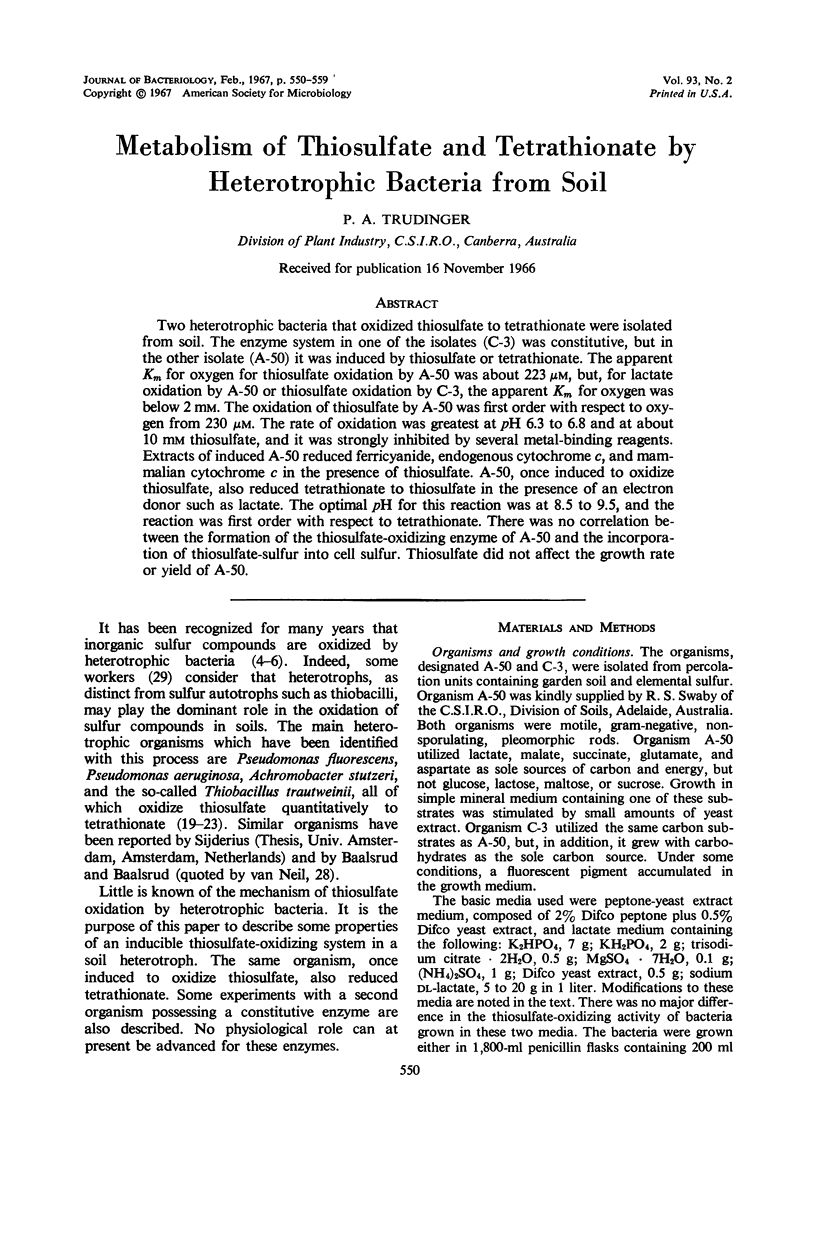
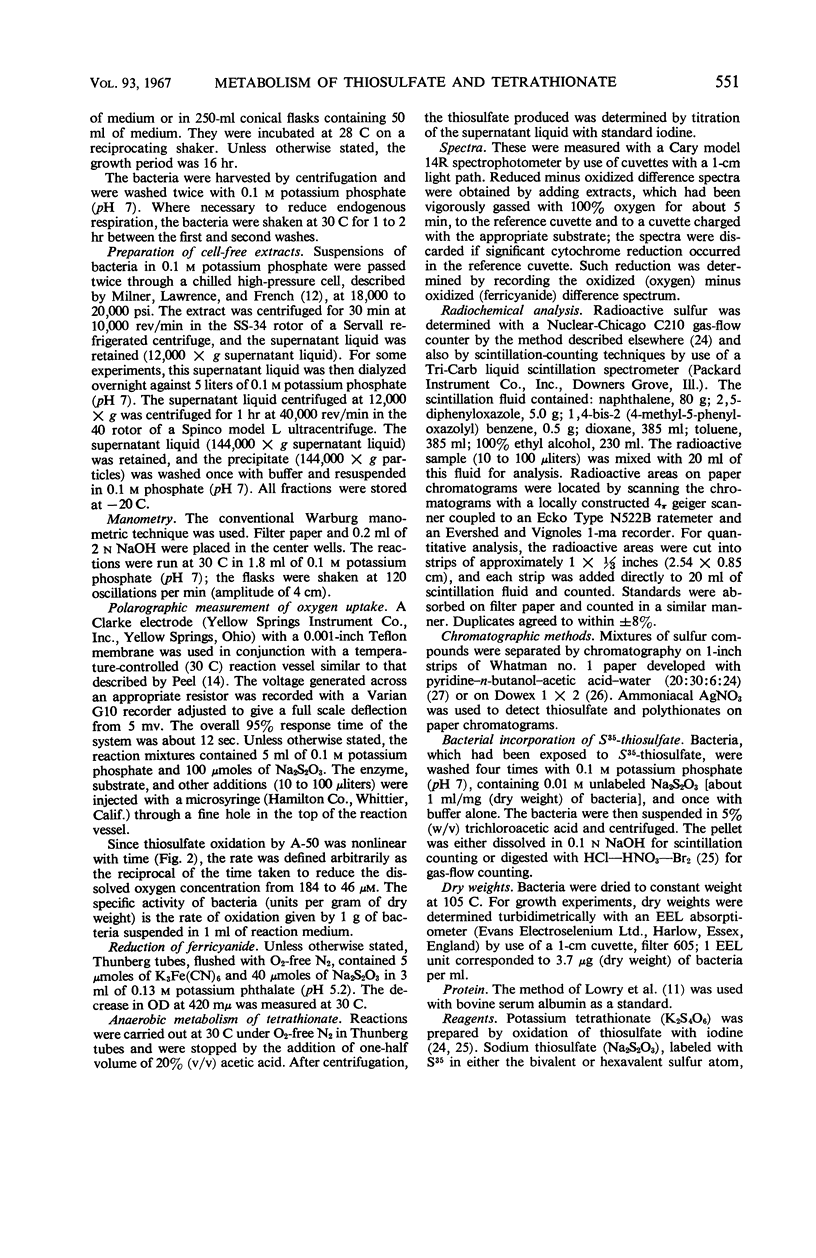
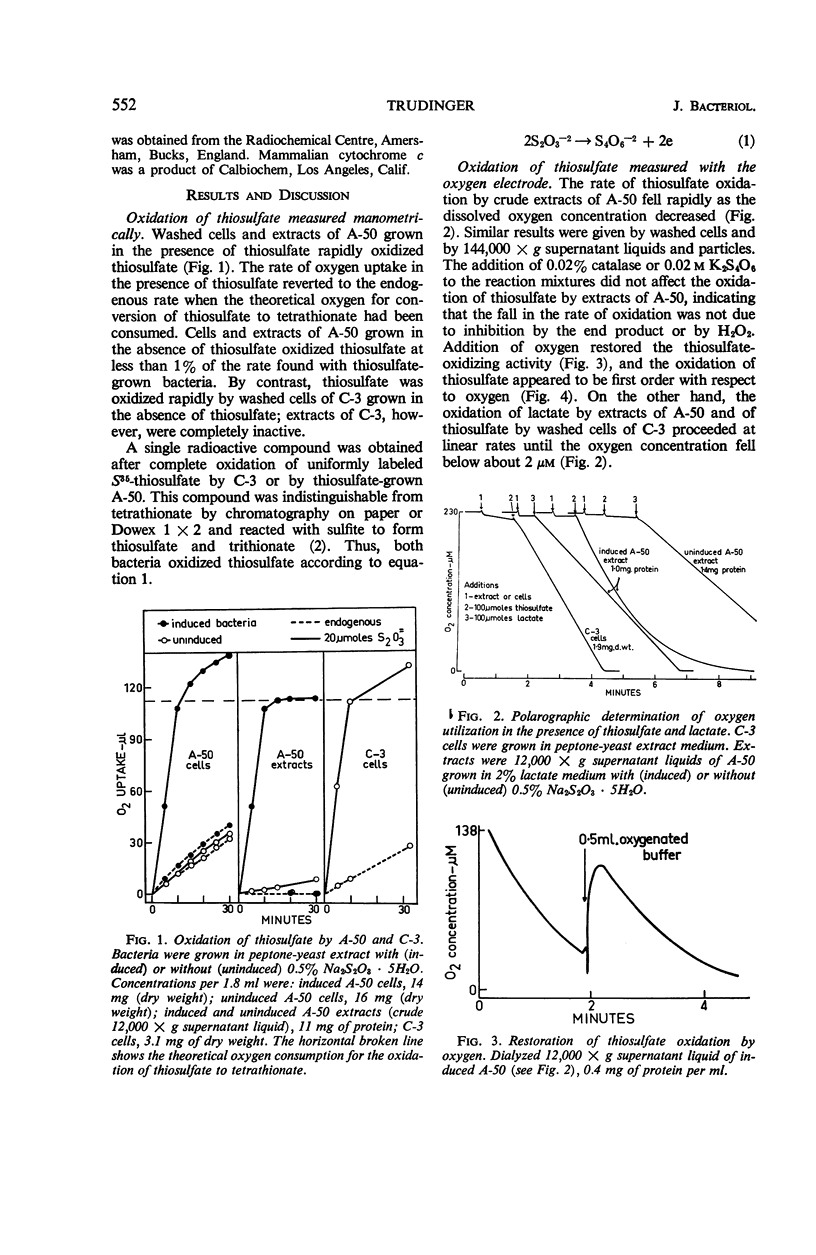
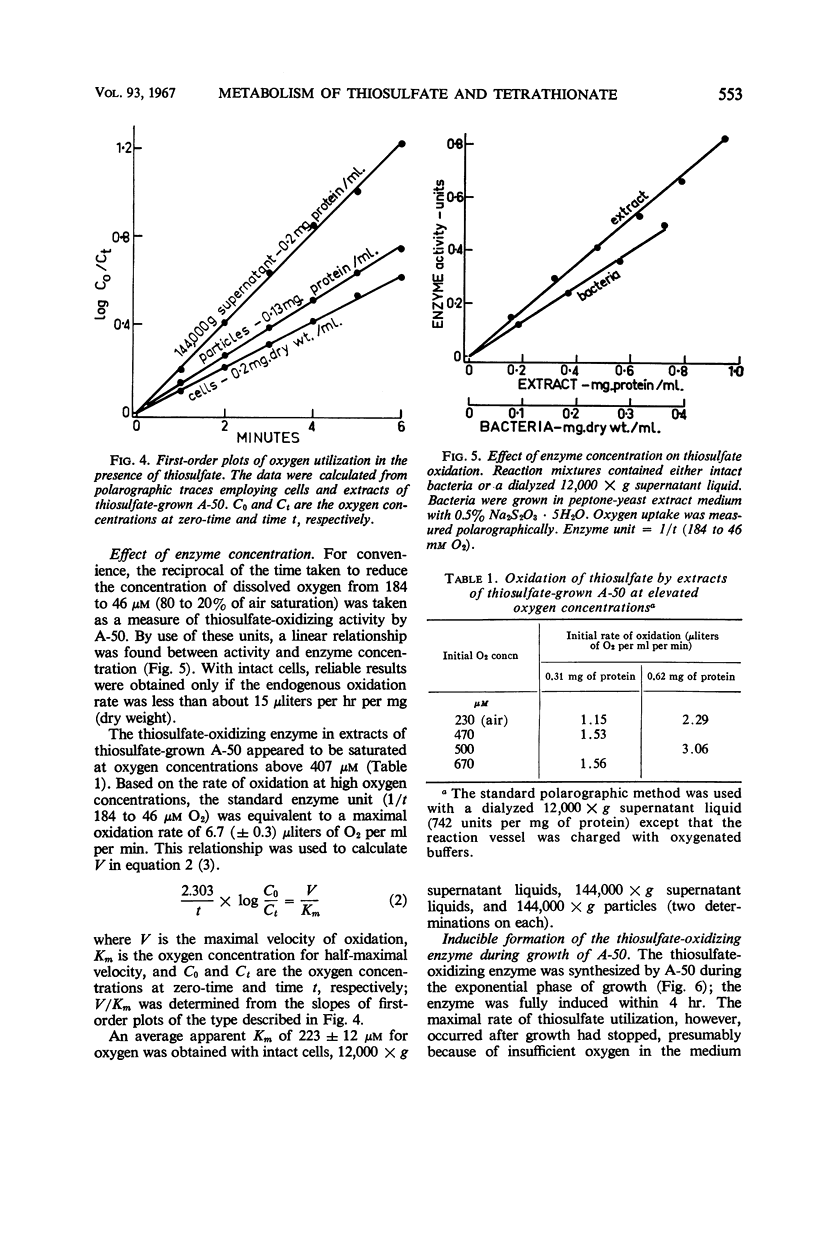
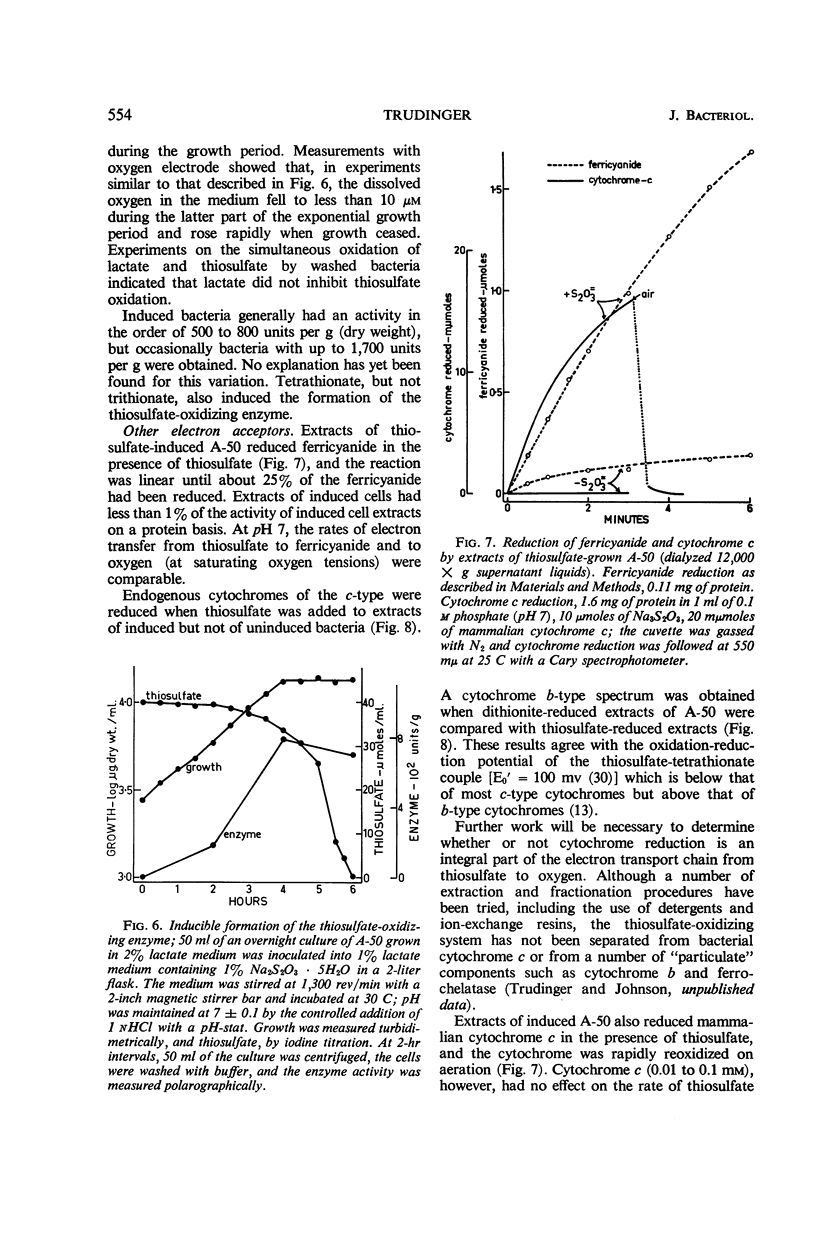
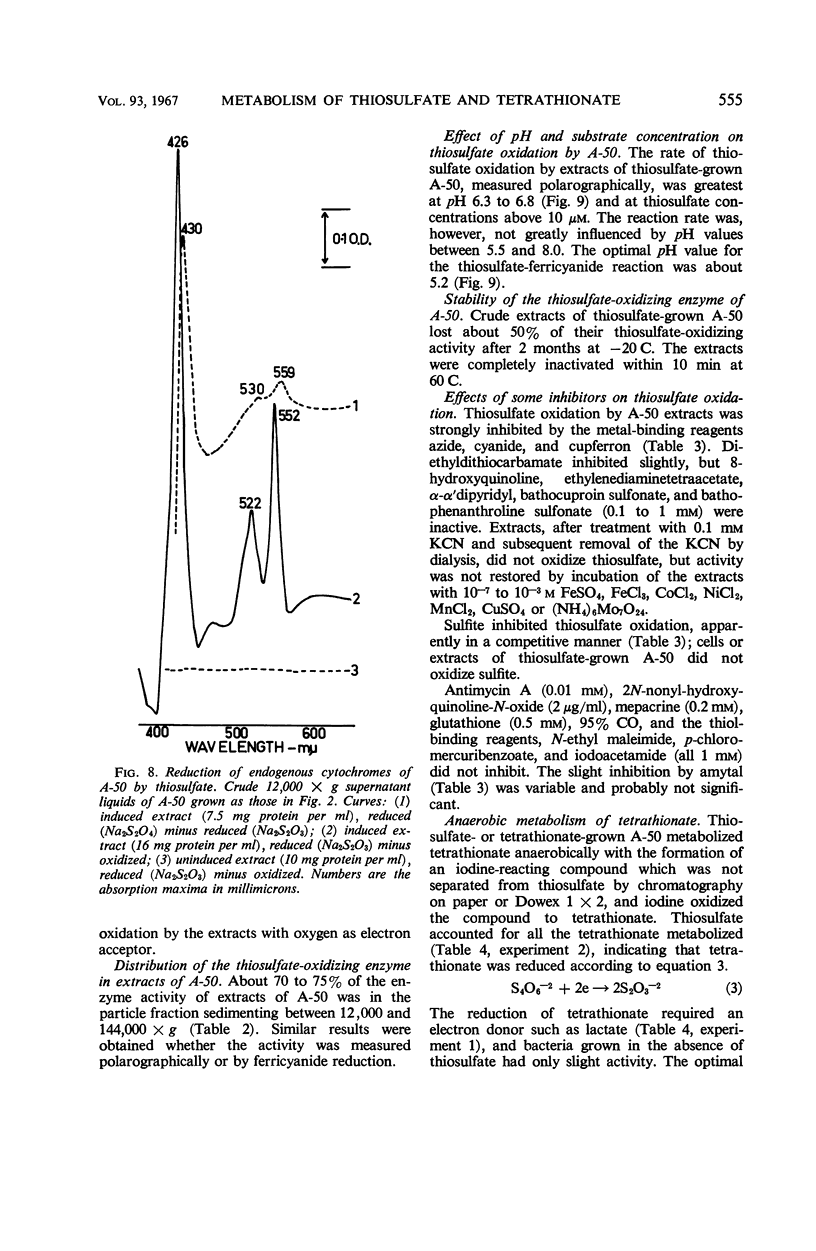
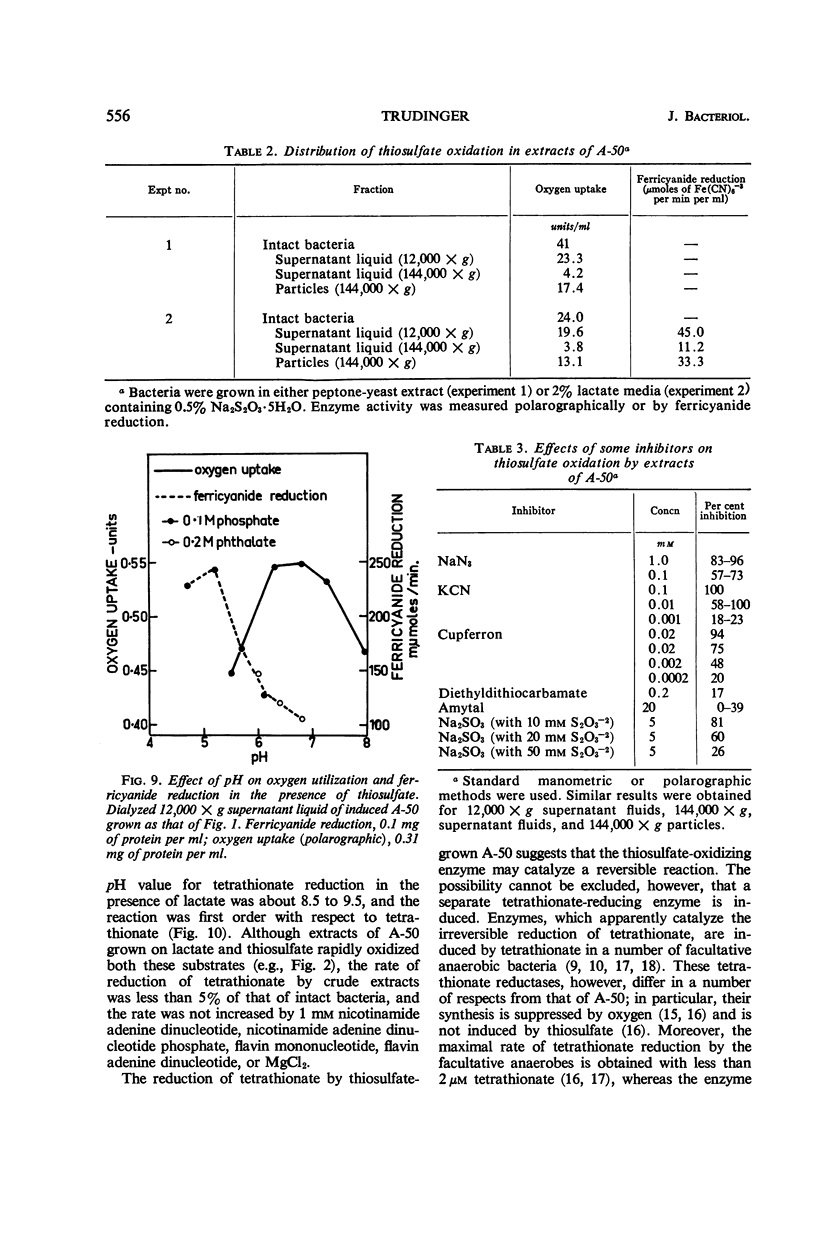
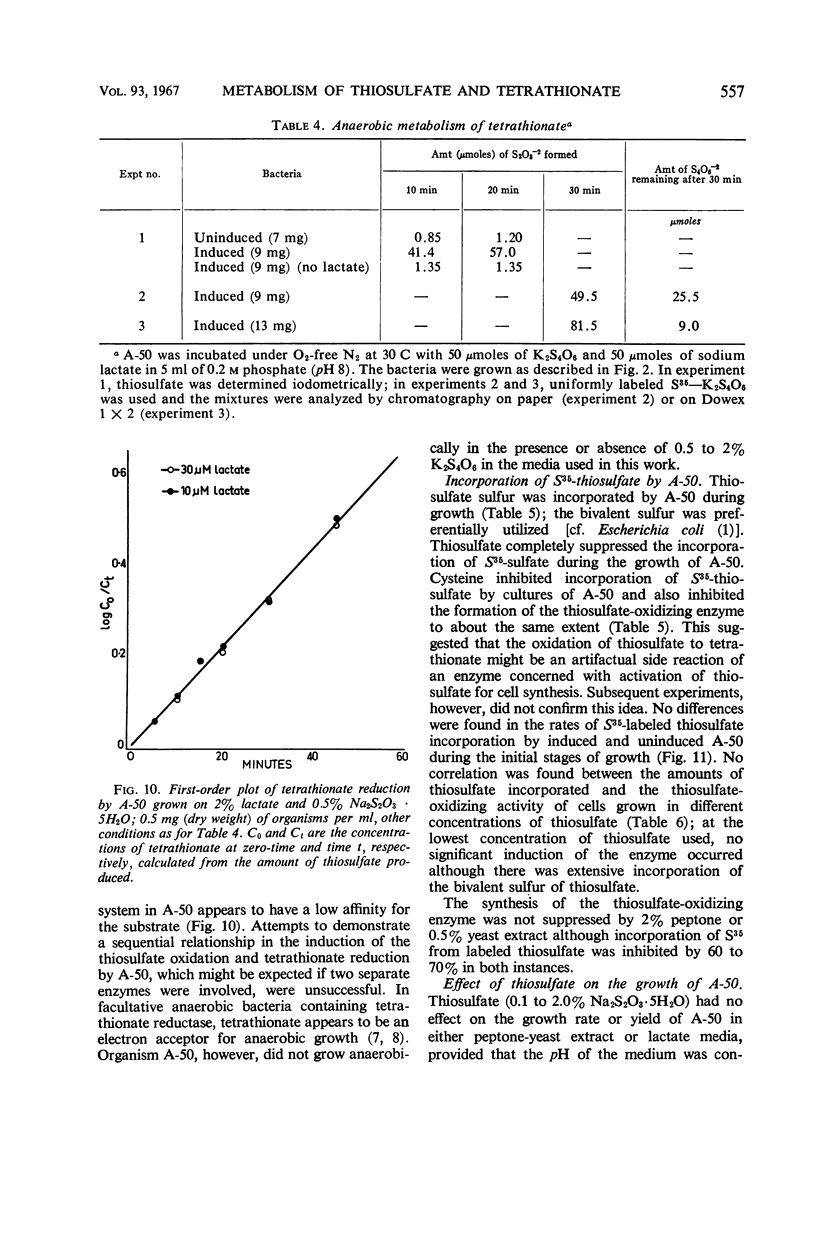
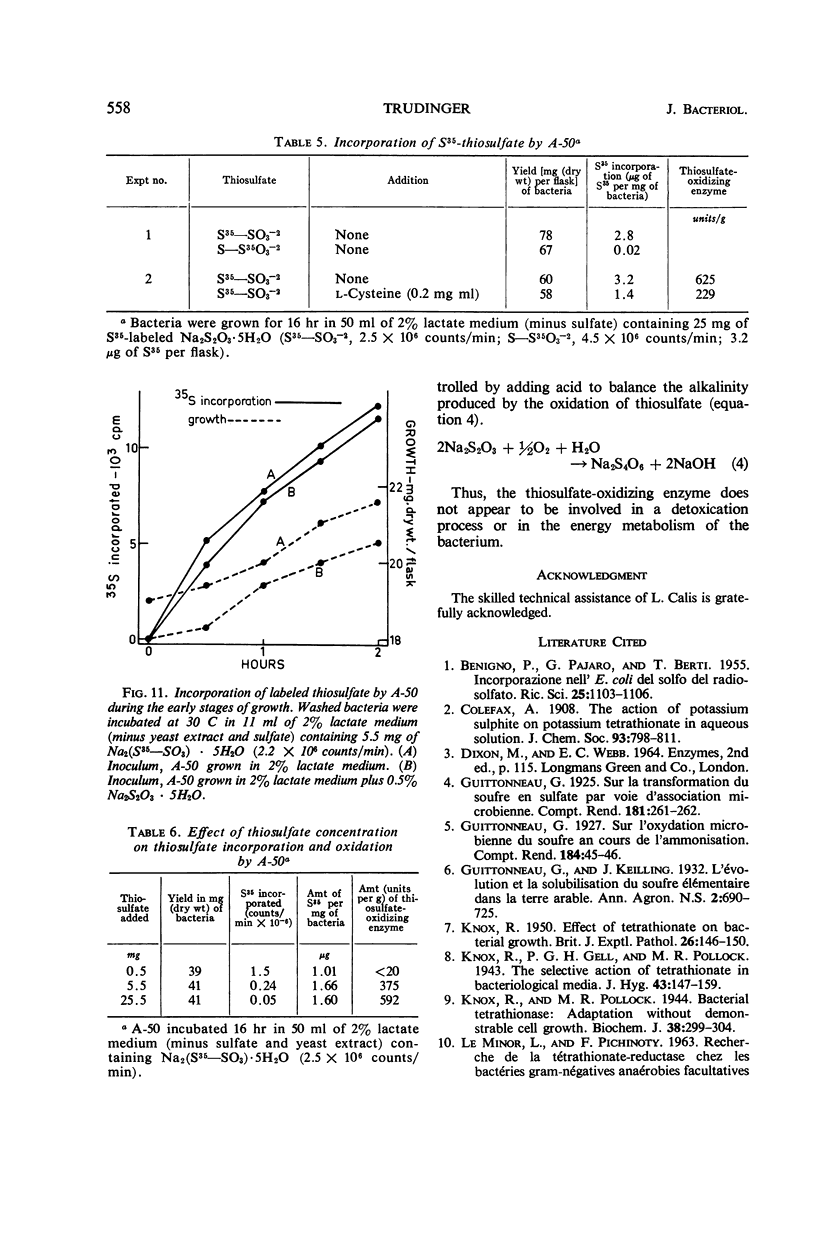
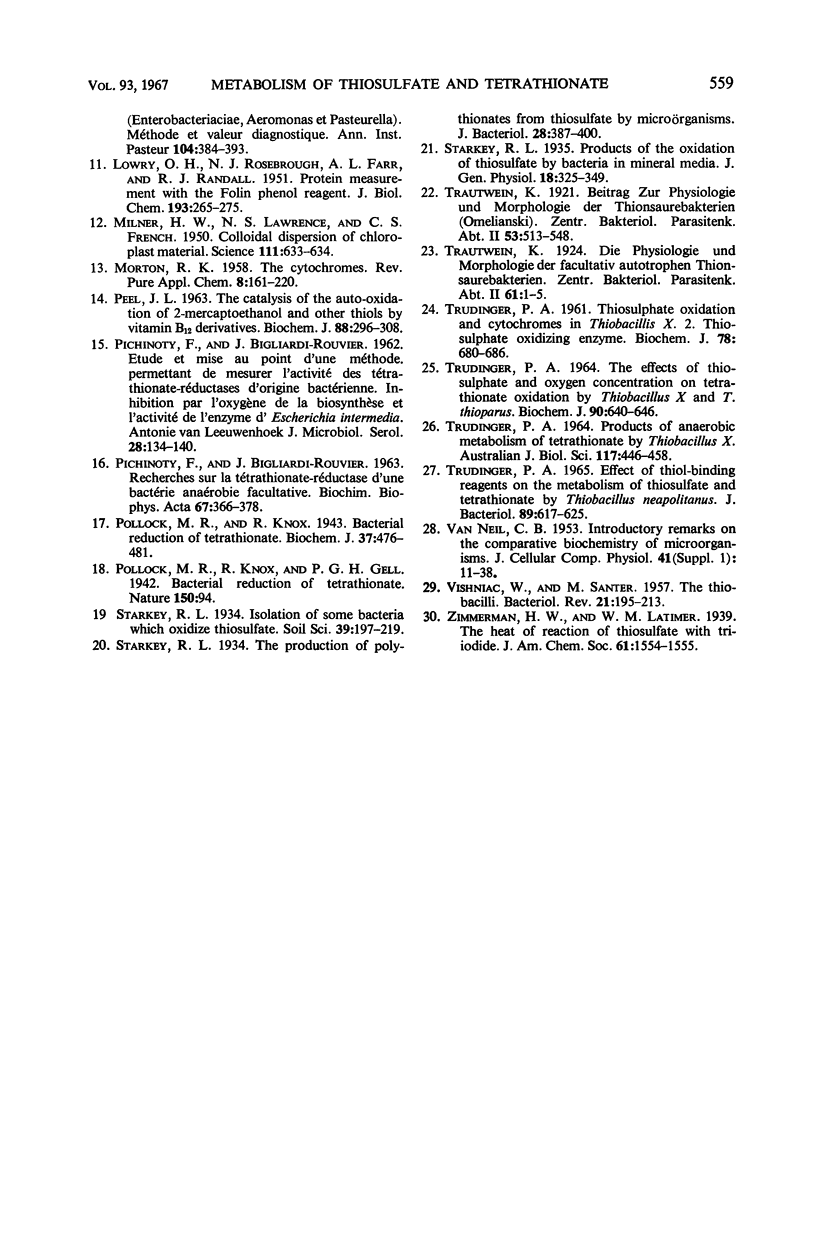
Selected References
These references are in PubMed. This may not be the complete list of references from this article.
- Knox R., Pollock M. R. Bacterial tetrathionase: adaptation without demonstrable cell growth: A report to the medical research council. Biochem J. 1944;38(4):299–304. doi: 10.1042/bj0380299. [DOI] [PMC free article] [PubMed] [Google Scholar]
- LOWRY O. H., ROSEBROUGH N. J., FARR A. L., RANDALL R. J. Protein measurement with the Folin phenol reagent. J Biol Chem. 1951 Nov;193(1):265–275. [PubMed] [Google Scholar]
- MILNER H. W., LAWRENCE N. S., FRENCH C. S. Colloidal dispersion of chloroplast material. Science. 1950 Jun 9;111(2893):633–634. doi: 10.1126/science.111.2893.633. [DOI] [PubMed] [Google Scholar]
- PEEL J. L. THE CATALYSIS OF THE AUTO-OXIDATION OF 2-MERCAPTOETHANOL AND OTHER THIOLS BY VITAMIN B12 DERIVATIVES. POLAROGRAPHIC AND OTHER INVESTIGATIONS. Biochem J. 1963 Aug;88:296–308. doi: 10.1042/bj0880296. [DOI] [PMC free article] [PubMed] [Google Scholar]
- Pollock M. R., Knox R. Bacterial reduction of tetrathionate: A report to the medical research council. Biochem J. 1943 Oct;37(4):476–481. doi: 10.1042/bj0370476. [DOI] [PMC free article] [PubMed] [Google Scholar]
- Starkey R. L. The Production of Polythionates from Thiosulfate by Microörganisms. J Bacteriol. 1934 Oct;28(4):387–400. doi: 10.1128/jb.28.4.387-400.1934. [DOI] [PMC free article] [PubMed] [Google Scholar]
- TRUDINGER P. A. EFFECT OF THIOL-BINDING REAGENTS ON THE METABOLISM OF THIOSULFATE AND TETRATHIONATE BY THIOBACILLUS NEAPOLITANUS. J Bacteriol. 1965 Mar;89:617–625. doi: 10.1128/jb.89.3.617-625.1965. [DOI] [PMC free article] [PubMed] [Google Scholar]
- TRUDINGER P. A. Thiosulphate oxidation and cytochromes in Thiobacillus X. 2. Thiosulphate-oxidizing enzyme. Biochem J. 1961 Apr;78:680–686. doi: 10.1042/bj0780680. [DOI] [PMC free article] [PubMed] [Google Scholar]
- Trudinger P. A. The effects of thiosulphate and oxygen concentration on tetrathionate oxidation by Thiobacillus X and T. thioparus. Biochem J. 1964 Mar;90(3):640–646. doi: 10.1042/bj0900640. [DOI] [PMC free article] [PubMed] [Google Scholar]
- VISHNIAC W., SANTER M. The thiobacilli. Bacteriol Rev. 1957 Sep;21(3):195–213. doi: 10.1128/br.21.3.195-213.1957. [DOI] [PMC free article] [PubMed] [Google Scholar]


